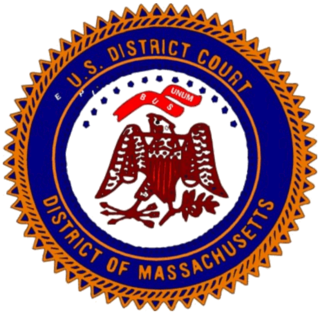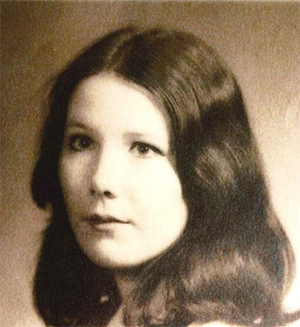
The Massachusetts Institute of Technology (MIT) is a private land-grant research university in Cambridge, Massachusetts. Established in 1861, MIT has played a significant role in the development of many areas of modern technology and science.

The police are a constituted body of persons empowered by a state, with the aim to enforce the law, protect public order, and the public itself. This commonly includes ensuring the safety, health, and possessions of citizens, and to prevent crime and civil disorder. Their lawful powers encompass arrest and the use of force legitimized by the state via the monopoly on violence. The term is most commonly associated with the police forces of a sovereign state that are authorized to exercise the police power of that state within a defined legal or territorial area of responsibility. Police forces are often defined as being separate from the military and other organizations involved in the defense of the state against foreign aggressors; however, gendarmerie are military units charged with civil policing. Police forces are usually public sector services, funded through taxes.

A detective is an investigator, usually a member of a law enforcement agency. They often collect information to solve crimes by talking to witnesses and informants, collecting physical evidence, or searching records in databases. This leads them to arrest criminals and enable them to be convicted in court. A detective may work for the police or privately.
The Criminal Investigation Department (CID) is the branch of a police force to which most plainclothes detectives belong in the United Kingdom and many Commonwealth nations. A force's CID is distinct from its Special Branch. The name derives from the CID of the Metropolitan Police, formed on 8 April 1878 by C. E. Howard Vincent as a re-formation of its Detective Branch. British colonial police forces all over the world adopted the terminology developed in the UK in the 19th and early 20th centuries, and later the police forces of those countries often retained it after independence. English-language media often use "CID" as a translation to refer to comparable organisations in other countries.

Kristin Denise Smart was a 19-year-old American woman murdered by Paul Flores at the end of her first year on the campus of California Polytechnic State University, San Luis Obispo.

Roger Caleb Rogerson was an Australian detective sergeant in the New South Wales Police Force and a convicted murderer. During his career, Rogerson received at least thirteen awards for bravery, outstanding policemanship and devotion to duty, before being implicated in two killings, bribery, assault and drug dealing, and then being dismissed from the force in 1986.
This articles lists various works of fiction that take place in Boston, Massachusetts:

Crime analysis is a law enforcement function that involves systematic analysis for identifying and analyzing patterns and trends in crime and disorder. Information on patterns can help law enforcement agencies deploy resources in a more effective manner, and assist detectives in identifying and apprehending suspects. Crime analysis also plays a role in devising solutions to crime problems, and formulating crime prevention strategies. Quantitative social science data analysis methods are part of the crime analysis process, though qualitative methods such as examining police report narratives also play a role.
Social network services are increasingly being used in legal and criminal investigations. Information posted on sites such as Twitter, Instagram, and Facebook has been used by police and university officials to prosecute users of said sites. In some situations, content posted on Myspace has been used in court to determine an appropriate sentence based on a defendant's attitude.
Yngve Koehler Raustein was a Norwegian undergraduate student at the Massachusetts Institute of Technology (MIT) in Cambridge, Massachusetts and a resident of Baker House. On the evening of 18 September 1992, the 21-year-old was walking down Memorial Drive by Hayden Library when he and his companion were attacked by three students of Cambridge Rindge and Latin High School. Shon McHugh, Joseph D. Donovan, and Alfredo Velez robbed Raustein and his companion of US$33. Donovan, unannounced, punched Raustein with such force that he broke his own hand, then McHugh stabbed the fallen Raustein repeatedly, causing fatal injuries. The three assailants were arrested within 1.3 miles (2.1 km) and 30 minutes, by the Boston University Police Department, after the three crossed Harvard Bridge to Boston and entered the grounds of Boston University.

Maura Murray is an American woman who disappeared on the evening of February 9, 2004, after a car crash on Route 112 near Woodsville, New Hampshire, a village in the town of Haverhill. Her whereabouts remain unknown. She was a 21-year-old nursing student completing her junior year at the University of Massachusetts Amherst at the time of her disappearance.

The Prince George's County Police Department (PGPD) is the primary law enforcement agency in Prince George's County, Maryland in the United States, servicing a population of over 900,000 residents and visitors within 498 square miles (1,290 km2) of jurisdiction.
The Homicide and Major Crime Command is an Operational Command Unit of the Metropolitan Police responsible for the investigation of homicide and other serious crimes in London. Most of their work was carried out by major investigation teams (MITs), of which there were 24. It was formerly known as the Homicide and Serious Crime Command.

The Cambridge Police Department is the municipal police department for the city of Cambridge, Massachusetts, in the United States. Formally organized in 1859. with the appointment of John C. Willey as the first chief of police, the Cambridge Police Department was then staffed by only 16 officers. The Cambridge Police Department moved its headquarters location on December 8, 2008. The police department is now located in the Robert W. Healy Public Safety Facility at 125 Sixth Street in the neighborhood of East Cambridge, leaving their Central Square location after 135 years.
Crime rates in the state of Washington grew rapidly to large levels from 1960 to 1980, however slowed in growth from 1980 onward. Although the cause of this drop in crime growth from the 1980s cannot be directly determined, it was believed to have been a result from several law enforcement initiatives & policies implemented throughout the state of Washington and across the United States, such as abortion access.

In United States of America v. Aaron Swartz, Aaron Swartz, an American computer programmer, writer, political organizer and Internet activist, was prosecuted for multiple violations of the Computer Fraud and Abuse Act of 1986 (CFAA), after downloading academic journal articles through the MIT computer network from a source (JSTOR) for which he had an account as a Harvard research fellow. Facing trial and the possibility of imprisonment, Swartz died by suicide, and the case was consequently dismissed.

The Boston Marathon bombing, sometimes referred to as just simply the Boston bombing, was a domestic terrorist attack that took place during the annual Boston Marathon on April 15, 2013. Brothers Dzhokhar and Tamerlan Tsarnaev planted two homemade pressure cooker bombs that detonated near the finish line of the race 14 seconds and 210 yards (190 m) apart. Three people were killed and hundreds injured, including 17 who lost limbs.

At 12:30 a.m. on January 7, 1969, Jane Britton, a graduate student in Near Eastern archaeology at Harvard University, left a neighbor's apartment in Cambridge, Massachusetts, United States, to return to her own. The next day, after she had failed to answer her phone and missed an important exam, her boyfriend went to the apartment and found her dead. The cause of death was found to be blunt force trauma from a blow to the head; she had been raped as well.

Michael Eugene Sumpter was an American serial killer who raped and strangled three women in the Greater Boston area from 1969 to 1973. Because Sumpter died before his DNA was matched to the rapes and murders, he was never tried for or convicted of these crimes.













